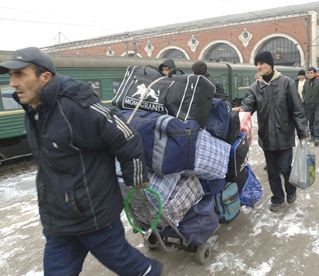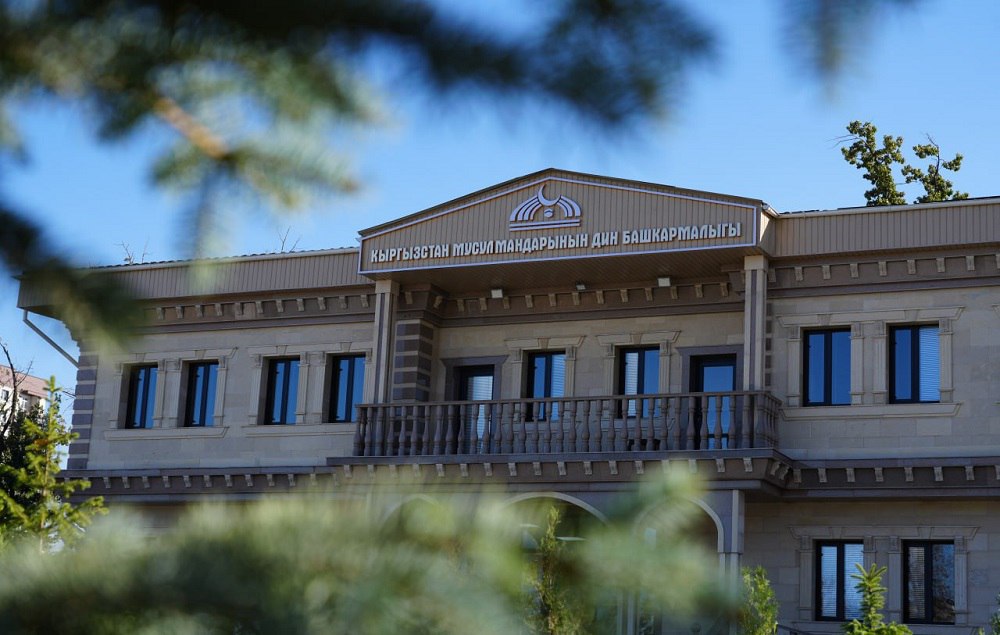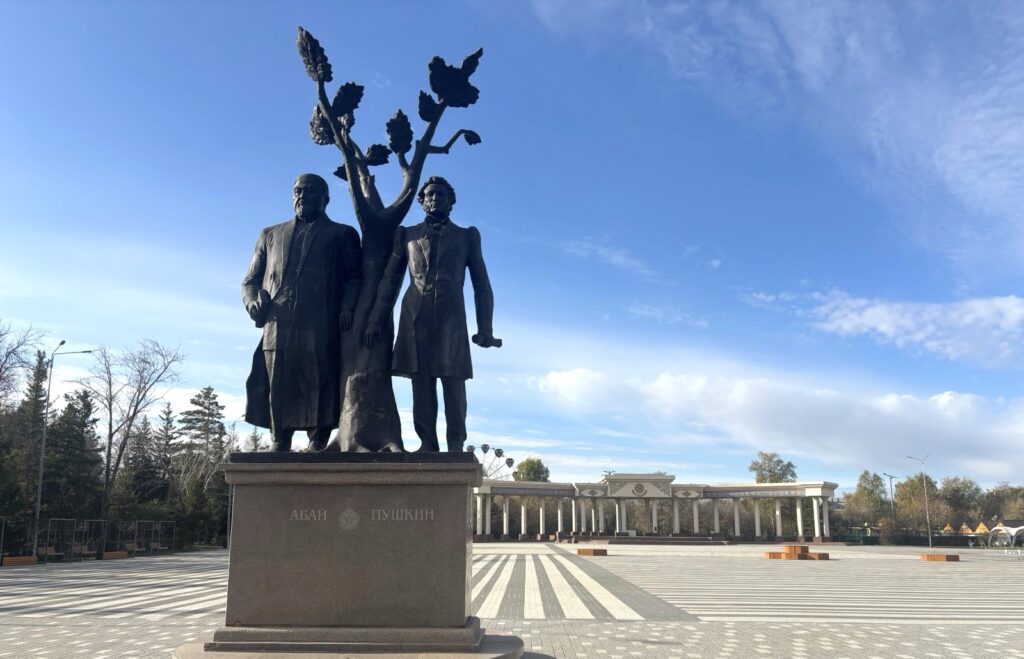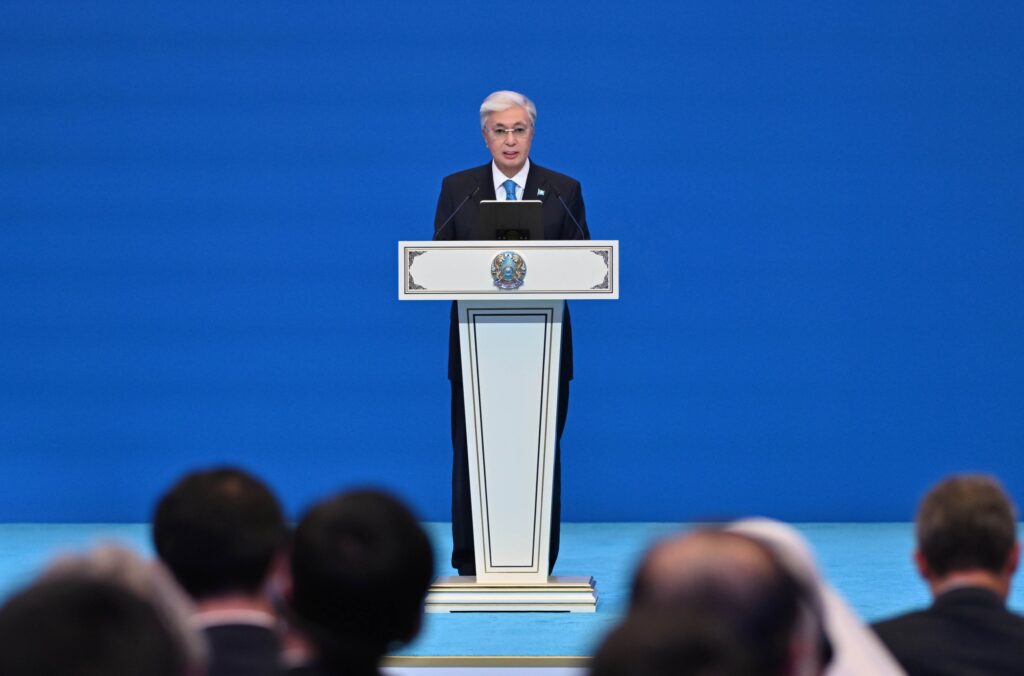BISHKEK (TCA) — Labour migration is as old as human statehood: ancient Mesopotamia, Egypt and Rome benefited from it. But the process is dynamic with ups and downs accompanying changes in economic patterns. Russia’s economic recovery is thereby good news for those seeking jobs. And it does not necessarily hinder economic development in migrants’ homelands provided their public and private sectors apply the right strategy – as the case of Kyrgyzstan illustrates.
Like lower-income countries a bit everywhere in the world today, the overall economic balance sheet of Kyrgyzstan is to large extents upheld by “imported income” i.e. cash remittances from Kyrgyz citizens working abroad – mainly in the Russian Federation. According to the global economic performance watchdog Trade & Economics, citing figures given by the National Bank of Kyrgyzstan, monthly remittances expressed in US dollar but mostly made in Russian roubles in March this year exceeded the average of $111.73 million from 2005 until 2016 and reached $134.1 million, up from $69.6 million in January and $98.1 million in February.
Transfers in Russian roubles
As a result of the productivity boost, demand for labour from other former USSR states has picked up as well, led by but not limited to co-members of the EEU. Over the first four months of this year, the total amount, meaning in all sorts of currencies, transferred home by migrants working in Russia was in the order of a billion greenbacks, or 66.2 billion rouble. This was an increase of 11.9 per cent from 59.1 billion rouble in the same period of 2015, which in turn represented an 8 per cent drop year-on-year, according to an analysis in Izvestia posted on June 14 this year.
Along with the overall turning point, transfers in Russian roubles remain on the increase against a decrease in hard currency transfers. “In January-April 2016, the volume of ruble transfers abroad from non-residents reached 30.3 billion ruble – a rise of almost 50 per cent compared with the same period last year,” the article read, with reference to reports filed by Russian banks to the Central Bank.
Decrease in costs of living
The reasons for the pick-up are clear to see. Russia has managed to compensate foreign capital provisions by domestic capitalisation and thereby replaced consumer goods previously imported by home-made items. Over last year, cheese production in the Russian Federation increased by 36 per cent, that of pork by 31 and that of poultry by 22 per cent, according to figures posted by the National Statistics Agency, due to the embargo imposed on food imports from the west. This has been accompanied by increasing demand for labour and a decrease in costs of living for both the Russian population and its immigrants.
On the negative side, the current trend also dismisses the equally much-cited “return to the homeland” of Kyrgyz working forces from Russia and other ex-Soviet states. This in turn upholds the shortage of workers in Kyrgyzstan, replaced by cheap but little-performing (and to large proportions illegal) employees mainly from the country side as well Tajikistan and Uzbekistan.
Misspent capital and income
The Kyrgyz nation is spending more than it earns. In the first quarter of this year, Kyrgyzstan’s economy received capital investments to the amount of 16.5 billion som, according to the CIS Interstate Statistics Committee. The amount stands more or less at par with the same period of last year, and given the stable position of the national currency comes pretty close to the “real” economic figure. But if the trend persists through the year, it will cut the last full year’s sum of 120.9 billion som down to hardly more than half its size.
To blame the exodus of labor force for this, seen as lowering the investment versus productivity ratio, would be erroneous. Yes, that ratio is indeed lowering, but not due to manpower problems but due to misspending of both capital and income.
Kyrgyzstan should develop its national economy with a vigorous spending policy toward industrialization to be pursued by both the government and private enterprises. Setting such priorities and implementing them is the obvious strategy for Kyrgyzstan.
This is Part 1 of a series of articles about the problem of labor migration from Central Asian countries. It will be followed by articles on Uzbekistan and Tajikistan.









